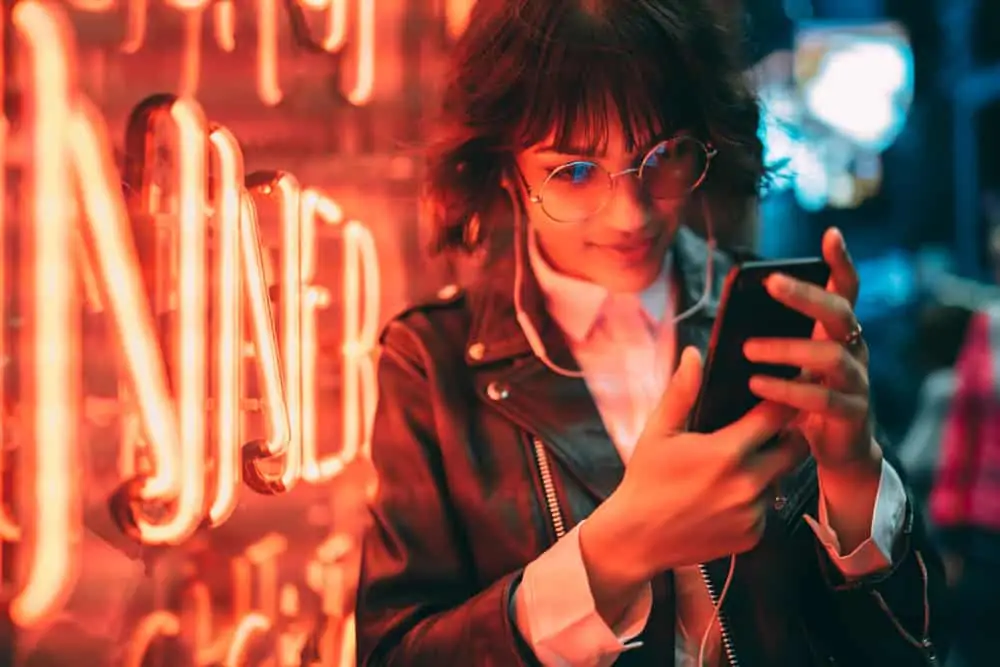Google Pixel XL: At First Glance
The Google Pixel is a known family name among laptops and tablets. In 2016, the brand decided to release two smartphones into the Google Pixel family.
Thereby, releasing the Google Pixel and Google Pixel XL. In a real sense, the phones were engineered and designed by Google while they were assembled by HTC.
The Google Pixel XL which is the major subject of this review promises to deliver a seamless Google experience. During its release in 2016, the price was on par with flagship competitors at the time.
However, now in 2021, there have been several releases into the Google Pixel family thereby leading to a drop in the price of the old ones. Speaking of which, at the time we updated this review in October 2021, the Google Pixel XL goes for a price of $199.99.
All that being said, let us proceed to discuss what you will be getting if you decide to purchase the Google Pixel XL.
Google Pixel XL: Design, Dimension & Weight
If the design was everything, the Google Pixel XL must have had it all. The Google Pixel XL is made of metal and glass giving it a high-end aesthetic touch.
The back chassis is sectioned into two regions with a contrast in color, texture, and material. The top section is made of a glossy glass finish while the rest of the back cover is made of a matte aluminum finish.
The contrasting two-tonal design of the back chassis is good to see. For color options, the Google Pixel XL is available in three color options and these color names are quite funny.
Speaking of the funny color names, there is Quite Black, Really Blue, and Very Silver. In order not to be saddled with making a color choice, I will make it easier for you by describing the color options better.
The Quite black models of the Google Pixel XL are the only ones with black front bezels. The back view of these models has a glossy black glass finish at the top and a matte gray aluminum finish for the rest of the back cover.
Meanwhile, the Very Silver color models have white front bezels. The back view of these models is the most simple of the three color options.
It is made of a glossy silver glass finish at the top and a slightly toned matte silver finish at the bottom region. I like the neutral contrast of Very Silver over the other color options.
Likewise, the Really Blue color options also have white front bezels. Meanwhile, the back is a dual-tone of contrasting blues – this is the most flashy of all the color options.
Irrespective of the color option you choose, the Google Pixel XL looks good. However, there are few issues with the glassy black, it attracts fingerprints easily coupled with the high risk of cracking when the phone falls.
To avoid these issues, you should use a protective casing.
Moving on, the glossy glass region of the back cover houses the LED flash at the top-left corner. Next to the flash is the rear camera followed to the right by two autofocus sensors and a microphone.
Furthermore, the circular fingerprint sensor also sits within the glass region and as such, it is coated in glass and susceptible to fingerprints. Above the fingerprint sensor, there is an NFC (Near Field Communication) area.
The NFC is useful for making contactless data transfers with other NFC-enabled devices. It is also useful for making payments via Google Pay, Android Pay, and other contactless payment options.
For the aluminum region of the back cover, there is a G Google logo and an antenna line cutting across the bottom.
Moving on to the front view, the 5.5-inch display is framed by the prominent top and bottom bezels. The top bezel houses the earpiece by the center while the front camera sits to its left and the proximity sensor below it.
Meanwhile, the bottom bezel is just for aesthetics purposes it does not house anything. The three navigation controls are solid white and are located on the screen just above the bottom bezel.
The home navigation control has a ring around it to indicate the presence of Google Assistant. Google Assistant is a digital voice-controlled assistant similar to Apple’s Siri, it helps with things like checking emails, controlling music, etc.
Now, let us move to the edges, the top edge houses a 3.5 mm audio jack. Meanwhile, the bottom edge houses a speaker, USB Type-C port, and another microphone.
The only feature on the left side of the Google Pixel XL is the SIM card tray that you can eject with the help of an ejector tool. However, the right side is home to the power button as well as the volume buttons.
The power button also launches the camera when you double press it.
When it comes to the size of the Google Pixel XL, it measures 154.72 x 75.74 x 7.31 mm. Although the Pixel XL is a large phone and cannot be used one-handed, it is comfortable in the hands.
In comparison, the Pixel XL is a bigger version of its sibling – Google Pixel which measures 143.8 x 69.5 x 7.31-8.5 mm. Meanwhile, it has the same thickness but is smaller than the iPhone 7 Plus which measures 158.2 x 77.9 x 7.3 mm.
For the weight, the Google Pixel XL weighs 168g while the Google Pixel weighs 143g, and the iPhone 7 Plus weighs 192g. Thankfully, the Google Pixel XL’s weight falls within the range preferred by most smartphone users.
Research has it that most users prefer phones that weigh between 140 g to 170 g.
The Google Pixel XL is a premium-looking phone that competes favorably with other flagships on the design front. Unfortunately, the Google Pixel XL is not waterproof unlike most of these flagships, and this seems like a huge letdown.
However, it is rated IP53 for dust and light water resistance meaning that your Google Pixel XL might survive light water spills but definitely not dunking.
Finally, I will rate the Google Pixel XL a nine in this design and dimension review section.
Google Pixel XL: Display Features
When considering what phone to buy, the quality of a phone’s display plays a major part. This is because the quality of the display in a phone determines the quality of the graphics.
To help you decide how good the Google Pixel XL’s display is, we will review the display technology, resolution, and other factors. Google designed the Pixel XL display with AMOLED technology and it has a 2K resolution.
One known advantage of AMOLED displays over IPS LCD (its competitor), is that AMOLED displays consume less battery. Additionally, AMOLED screens produce more vivid colors, deeper blacks, and better contrast ratios.
However, the AMOLED screen of the Google Pixel XL does not produce deeply saturated colors as that of Samsung’s AMOLED.
As I mentioned earlier, the Google Pixel XL’s display has 2K resolution also referred to as QHD with 2560 x 1440 pixels. This is not the best available display resolution but it produces sharp and vivid screen content.
Additionally, with a 16:9 aspect ratio, you will enjoy watching movies and playing games at widescreen.
The screen has a pixel density of 534 PPI which makes it sharper than the Retina display of the iPhone 7 Plus. Whereas, the iPhone 7 Plus has a pixel density of 401 PPI.
The screen has an average brightness of 408 nits which you can manually increase to a maximum of 446 nits. However, the sunlight legibility is not so impressive hence, the screen tends to be very dim outdoors.
Moreover, the reflection of the sun on the screen also affects the screen legibility. Therefore, it is recommended to use the Google Pixel XL under a shade especially on sunny days.
Viewing angles on the Google Pixel XL are great. Consequently, you will experience no brightness or color loss when you view the screen from acute angles.
Color reproduction is not as wide as the Samsung S7 Edge however, it reproduces a high color gamut.
Furthermore, the Google Pixel XL supports a night light feature that automatically tints the phone’s screen at night to prevent eye strain.
The Google Pixel XL’s display is coated with corning gorilla glass 4. This helps to protect it from cracks however, you can still use a screen protector to add another layer of protection.
Finally, I will rate the Google Pixel XL a seven in this display feature review section.
Google Pixel XL: Camera Features
Next in my Google Pixel XL review is its camera features. A phone’s camera has become one of the top features users consider before making a buying decision.
The reason for this is obvious, most of us now use our smartphones as our primary cameras. Google has done a good job with the Pixel XL camera – you can even tell from its name.
The Google Pixel XL has a 12.3 MP rear camera with an ƒ/2.0 aperture and a 1.55-micron pixel. Additionally, it has an 8MP front camera with an ƒ/2.4 aperture.
The cameras of the Google Pixel XL have rightfully placed it among 2017 flagships like the iPhone 7 Plus and the Samsung Galaxy S7. Although the Google Pixel does not have dual rear cameras like the iPhone 7 Plus, it has a lens blur feature.
The lens blur feature tries to mimic the blurred background effect produced by the dual cameras of the iPhone 7 Plus. The feature is quite tricky to use, it involves keeping a steady hand while capturing an image.
However, it usually turns out well when you get it right.
The camera focuses quickly and the automatic HDR mode is very fast. It takes sharp and detailed pictures be it portraits or landscapes,
Outdoor pictures are very clear and vibrant whereas pictures taken in low lights tend to have digital noise. Nonetheless, pictures taken in low lighting conditions tend to be clearer and brighter than you will get on the Samsung S7.
However, it is not as sharp as you would get on the iPhone 7 Plus. Also, the Google Pixel XL produces more natural-looking images than Samsung’s S7 but is more saturated than the iPhone 7’s.
The flash works well too by giving a natural tone of brightness to pictures taken at night. It would have been difficult to tell that the flash was used if not for the eye reflection it leaves.
The front camera is excellent as well, it takes nice selfies with a soft airbrushed touch. Though you will need a proper lighting source to get clear photos since there is no front flash.
The camera app has several features such as a manual exposure slider, focus lock, tap-to-focus, and white balance. There is also a SmartBurst feature for taking multiple images at the same time.
Furthermore, the Google Pixel XL camera can record 4K resolution videos at 30 fps. Unfortunately, the Google Pixel XL lacks an Optical Image Stabilization (OIS) that helps reduces manual shakes.
However, it employs a gyro stabilization technique and an Electronic Image Stabilization (EIS) via software. Hence, videos output is smooth snd shake-free.
Finally, I will rate the Google Pixel XL a nine in this camera review section.
Google Pixel XL: Battery Life and Talk Time
As we depend more and more on our phones, the need for reliable phone batteries is increasing by the day. The good news is that Google Pixel XL does not completely disappoint in the battery department.
The smartphone ships with a 3,450 mAh non-removable battery.
I am not a big fan of non-removable batteries because it places restrictions on swapping out batteries when they are flat or damaged. However, this seems like a design pattern we are stucked with since we hardly see recent smartphones with removable batteries.
On a brighter note, the battery capacity is on par with the other rivals. Thankfully, Google has promised us that the battery will deliver up to 32 hours of 3G battery talk time.
In this review, I will include the result from a video playback test carried out by PCMag. The test involved streaming a full-screen video over 4G LTE while screen brightness was set to maximum.
Consequently, the Google Pixel XL lasted 6 hours 43 minutes. That is a little longer than the iPhone 7 Plus that lasted 6 hours in the same test.
However, the Google Pixel XL’s performance falls short of that of the Samsung S7 Edge which lasted 10 hours.
Notwithstanding, the Google Pixel XL’s battery performance is a good one and it will last for days on standby. Moreover, there is also a battery-saving mode that helps to reduce brightness and activities to save battery consumption.
In terms of charging capabilities, the Google Pixel XL does not support wireless charging despite its partly glass back covering. However, the included USB Type-C adapter supports fast charging.
Impressively, the battery charges to 35% in 30 minutes and 100% in 1 hour 30 minutes!
Finally, I will rate the Google Pixel XL a seven in this battery life review section.
Google Pixel XL: Storage Options & Performance
The next stop in this Google Pixel XL review is the storage options. Earlier we talked about how great Pixel XL’s camera is.
This implies that you will be taking a lot of pictures with your phone which in turn requires sufficient storage space. The Google Pixel XL is available in two storage options.
The first option ships with 32 GB internal storage while the second option is 128 GB. Whichever model you buy comes loaded with pre-installed apps. Although you can uninstall some of these pre-installed apps if you do not want them, they still take a sufficient storage space.
Additionally, the operating system also occupies a significant portion of the storage space. For instance, the remaining storage available on the 32 GB model after the OS and pre-installed apps is about 24.43 GB.
This is very limiting and your best bet is to go for the 128 GB models. Unfortunately, there is no provision for storage expansion via SD card.
On a brighter note, you will get free unlimited Google Photo cloud storage exclusive to Pixel users. Thereby, you will have all the cloud storage space you need to store your photos and videos.
In conclusion, I will rate the Google Pixel XL an eight in this storage options review.
Google Pixel XL: Security Features & Sensors
The Google Pixel XL is loaded with an assortment of essential sensors you would want on a modern phone.
To start with, the Google Pixel XL has a fingerprint sensor located at the back where it is easy to reach. The fingerprint sensor lets the user register five fingers, it is very fast at unlocking the phone and much more secure than a PIN.
The fingerprint sensor is intuitive, it is not only useful for unlocking the phone, but it also supports gesture controls.
In addition to the fingerprint sensor, the Google Pixel XL also has other essential sensors like the accelerometer and gyroscope. Furthermore, there is a barometer, proximity, and ambient light sensor.
The accelerometer and gyroscope sensors determine the phone’s orientation and automatically rotate the screen.
Whereas the proximity sensor detects when you are holding the phone near your face during a call and turns the display off. This is very important as it increases the battery life of the phone.
Another important sensor in this phone is the ambient light sensor. This sensor determines the degree of light around the phone and automatically dims the phone’s display.
The ambient light sensor is beneficial for reducing eye strain and reducing battery consumption as well.
Additionally, the Google Pixel XL has a barometer sensor that helps to send user data to health apps.
Finally, I will rate the Google Pixel XL a nine In this security features and sensors review.
Frequently Asked Questions
Despite the recent changes in Google cloud storage policies, users of the first generation of Google Pixel smartphones – Google Pixel and Google Pixel XL – will still get to enjoy free unlimited Google Photos cloud storage.
The Google Pixel XL was released in 2016 and it was expected to receive automatic security updates for at least 3 years after which required updates cannot be guaranteed.
No, Google Pixel XL can only be upgraded to Android 10, it stopped Supporting OS updates after 3 years of its release. Hence, you cannot update your Google Pixel XL to the more recent Android 11 and 12 versions.
The Google Pixel XL has a 3,450 mAh battery that was promised to deliver up to 32 hours of 3G talk-time. In a video playback test performed by PCMag, it lasted 6 hours 43 minutes.
Moreover, the battery will last for days if the phone was on standby.
The Google Pixel XL is available in two storage options. There is a model with 32 GB internal storage and another with 128 GB.
Sadly, there is no microSD card slot for storage expansion. On a brighter note, Google Pixel XL will get free unlimited Google Photos cloud storage.
Conclusion
The Google Pixel XL is definitely an enticing offer for android lovers. Although it has stopped receiving security updates and customer support since it’s been 5 years after its release.
However, you will still get to enjoy a functional Google assistant, support for Daydream VR, free unlimited cloud storage, and a great camera. In addition to these, you will also get a premium-designed phone, great camera, and enough screen estate to enjoy your videos and games.
Finally, it is difficult to find strong points against the Google Pixel XL except for its lack of water resistance. Therefore, if you want to enjoy the Google experience, then the Google Pixel XL is still a wonderful choice amongst other Pixel phones.
I hope you found this Google Pixel XL helpful. If that’s the case, click on “Yes” beside the “Was this page helpful” question below.
You may also express your thoughts and opinions by using the “Leave a Comment” form at the bottom of this page.
For more Smartphone reviews, visit our Smartphone Reviews page. You may also find our Smartphone Specs page very helpful.



